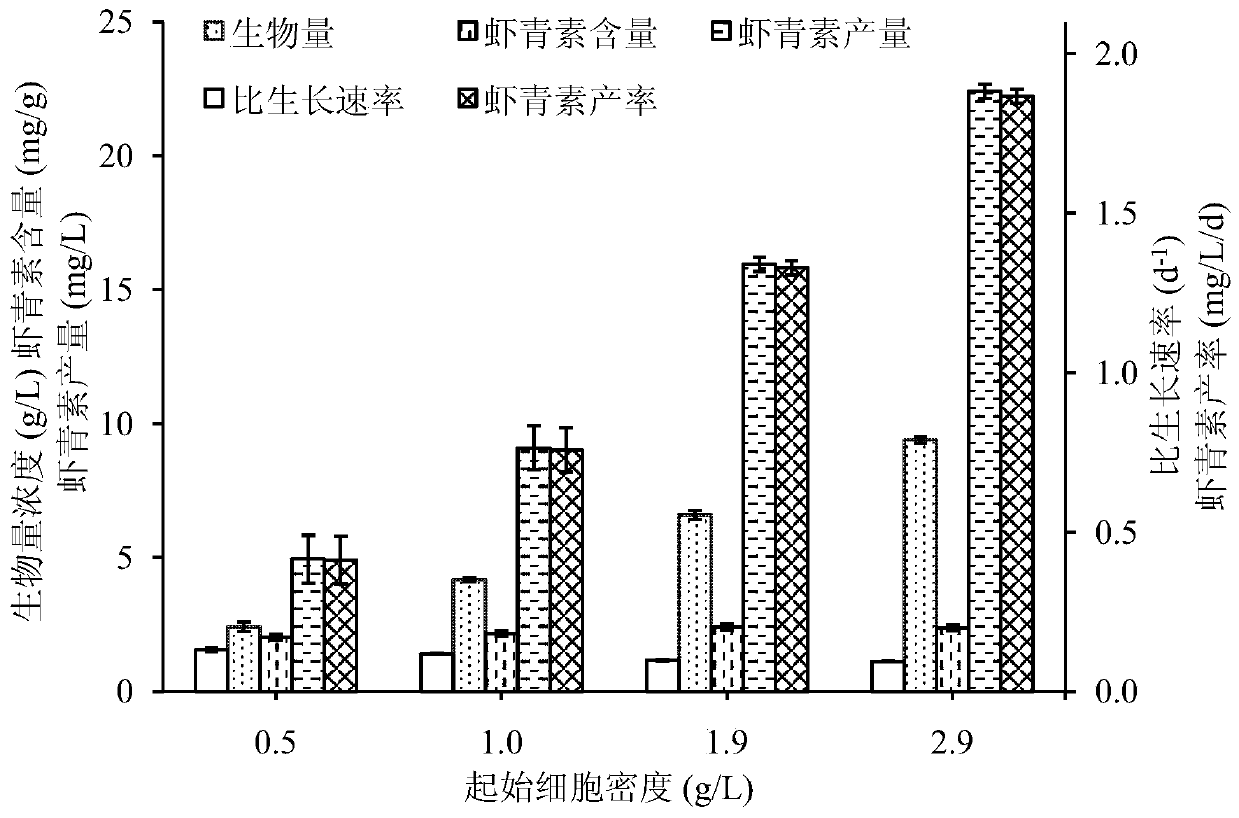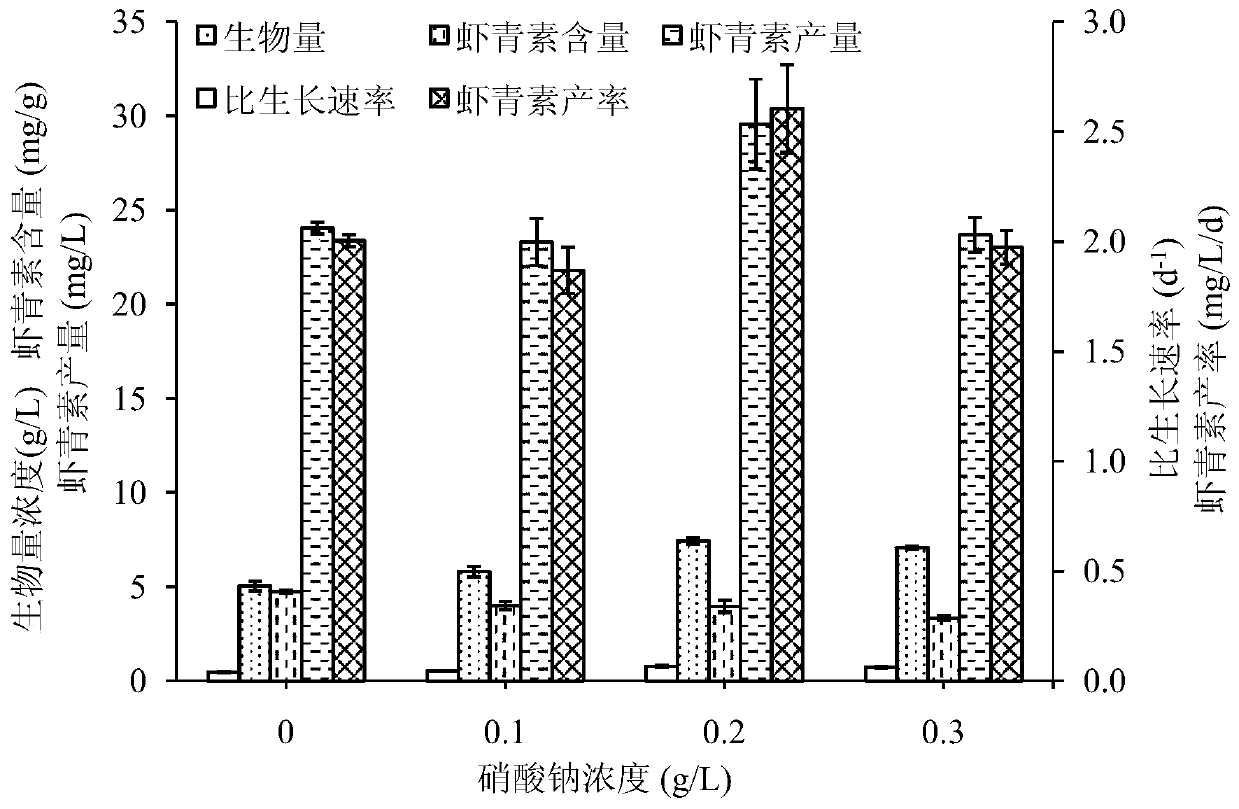A method for inducing Chlorophyll algae to efficiently synthesize astaxanthin
An astaxanthin and green algae technology, applied in microorganism-based methods, biochemical equipment and methods, unicellular algae, etc., can solve the problems of different astaxanthin synthesis mechanisms, differences in cell physiological and biochemical characteristics, etc., and achieve food safety. , The method is simple and the effect of reducing production costs
- Summary
- Abstract
- Description
- Claims
- Application Information
AI Technical Summary
Problems solved by technology
Method used
Image
Examples
Embodiment 1
[0027] The influence of embodiment 1 initial cell density on chlorophyll algae biomass concentration and astaxanthin output
[0028] 1.1 Strain activation and seed solution preparation
[0029] The chlorophyll algae C. zofingiensis preserved in the laboratory were transferred to the slant with modified Bristol medium for cultivation, the cultivation temperature was 26°C, and the light was 10 μmol m -2 the s -1 , and observe the growth of green algae.
[0030] Use an inoculation loop to inoculate the chlorophyll algae moss into a conical flask filled with modified Bristol liquid medium for cultivation, at a temperature of 26 °C and a light of 10 μmol m -2 the s -1 In a constant temperature shaking shaker, cultivate for 3 to 5 days and use it as a seed solution.
[0031] The composition of the improved Bristol medium (pH 6.5) described therein is shown in Table 1 below (in mg / L):
[0032] components Content (mg / L) components Content (mg / L) components C...
Embodiment 2~5
[0040] Embodiment 2-5 Effect of nitrogen source concentration on the accumulation of astaxanthin in the green alga C. zofingiensis induced by white light fruit
Embodiment 2-5
[0041] Embodiment 2-5 operates according to the following steps:
[0042] 2.1. Activation of algal species and preparation of seed solution
[0043] The chlorophyll alga C. zofingiensis species preserved in the laboratory was cultivated for 3 to 5 days according to the cultivation method described in 1.1, and used as the seed solution.
[0044] 2.2 Induction culture of accumulating astaxanthin under white light and different nitrogen source concentrations
[0045] The cultivated chlorophyll algae seed liquid is collected according to the method described in 1.2.
[0046] Dilute and resuspend with improved Bristol medium containing different nitrogen source concentrations, and control the cell density to about 3g / L, wherein Examples 2 to 5 respectively use nitrogen source concentrations of 0, 0.1, 0.2, 0.3g / L The modified Bristol medium, glucose 10g / L, and other components are the same as those in Table 1.
[0047] Divide the inoculated induction medium containing differ...
PUM
 Login to View More
Login to View More Abstract
Description
Claims
Application Information
 Login to View More
Login to View More - R&D
- Intellectual Property
- Life Sciences
- Materials
- Tech Scout
- Unparalleled Data Quality
- Higher Quality Content
- 60% Fewer Hallucinations
Browse by: Latest US Patents, China's latest patents, Technical Efficacy Thesaurus, Application Domain, Technology Topic, Popular Technical Reports.
© 2025 PatSnap. All rights reserved.Legal|Privacy policy|Modern Slavery Act Transparency Statement|Sitemap|About US| Contact US: help@patsnap.com



